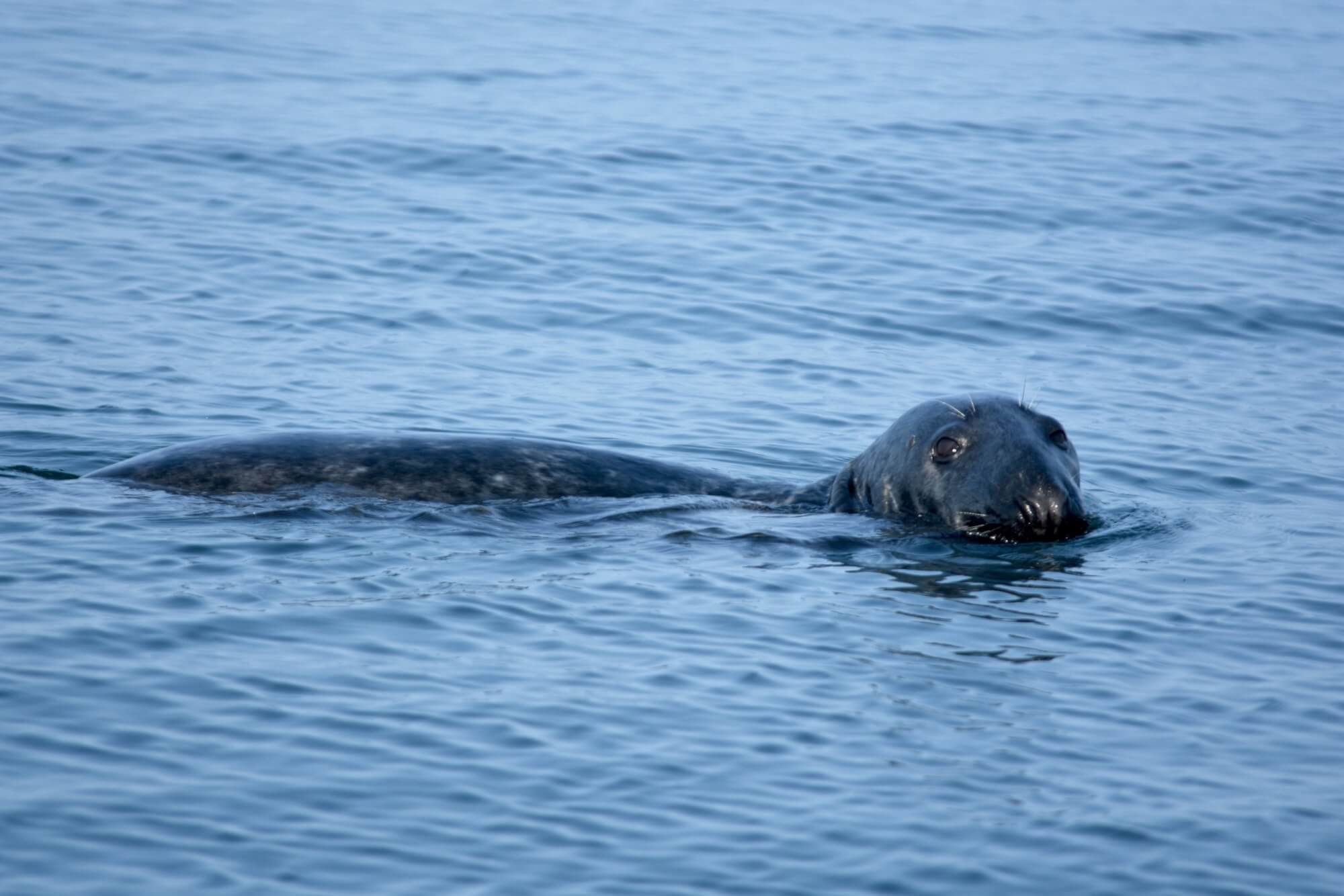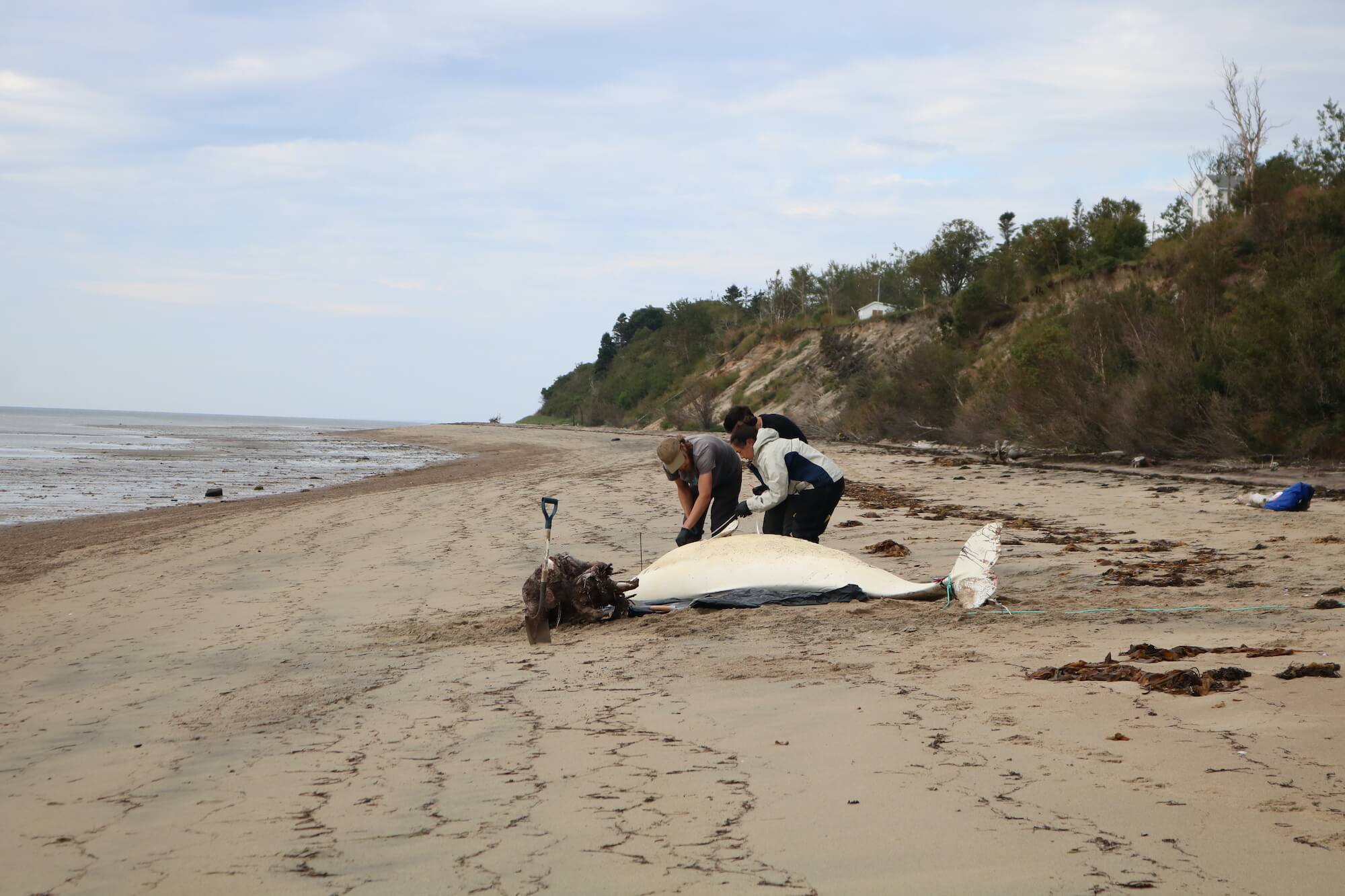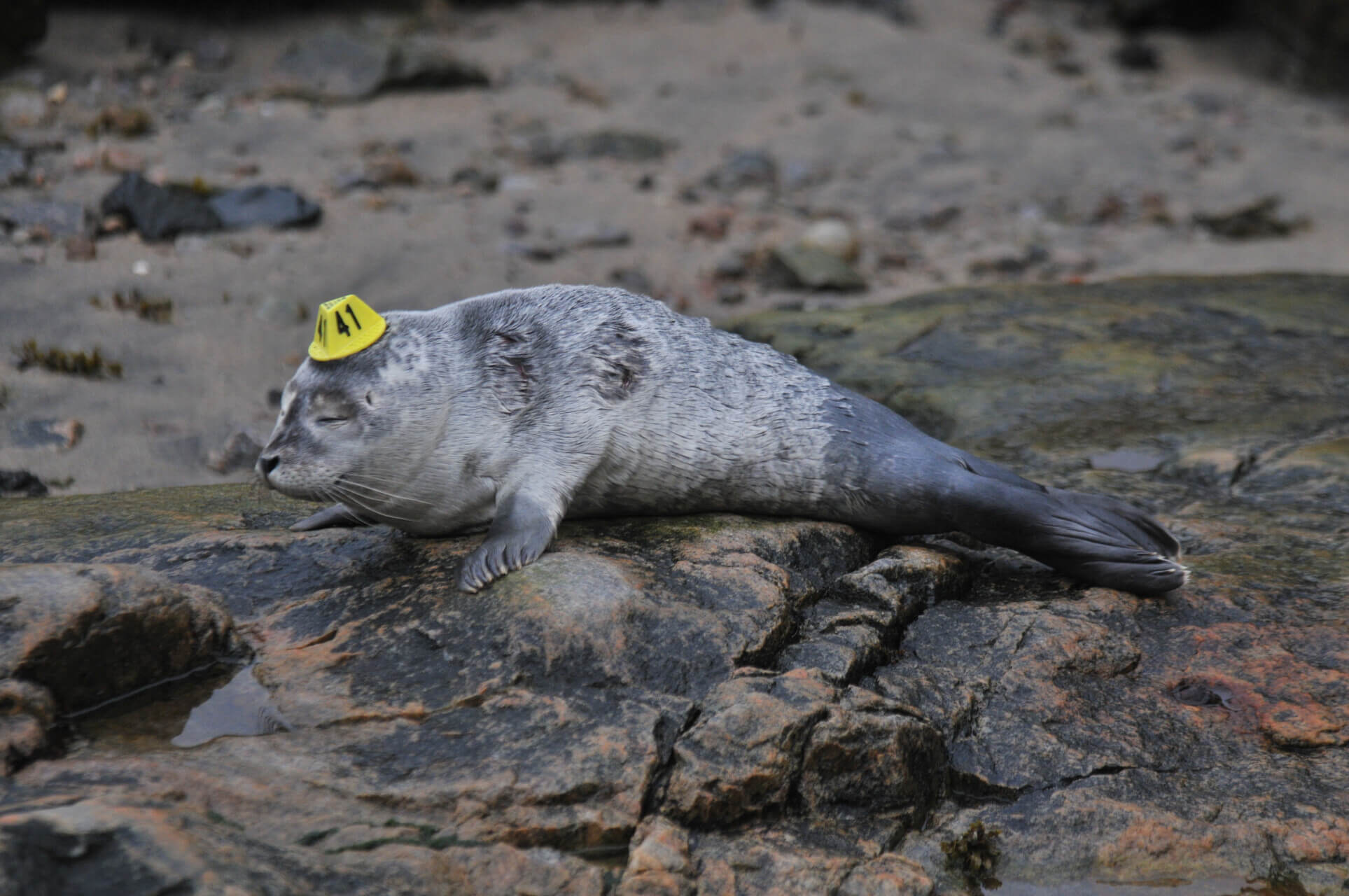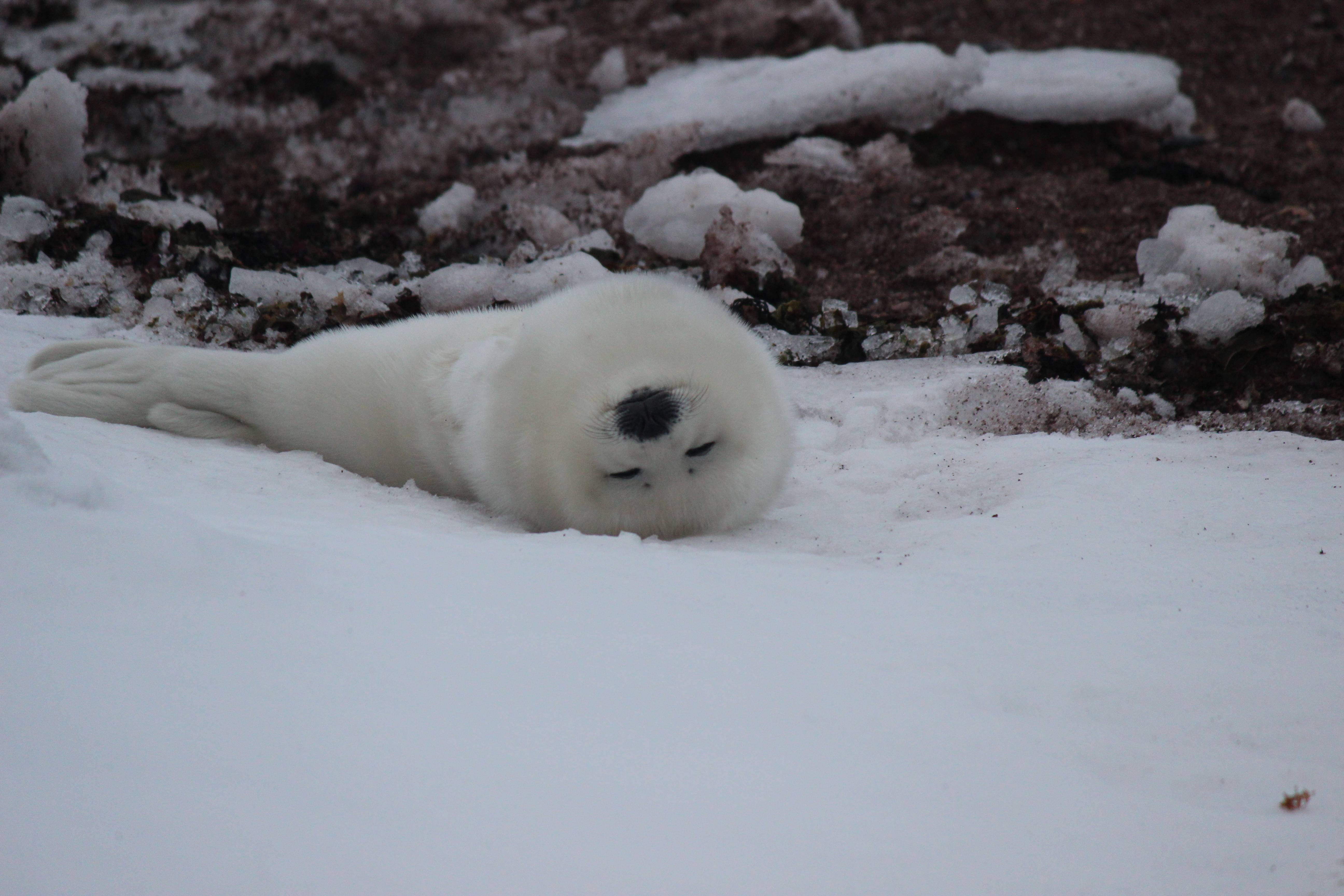The diminishing ice cover observed in the Estuary and Gulf of St. Lawrence in recent years is having an impact on reproduction in harp seals and grey seals, which give birth on the pack ice in winter. In addition to pushing these animals to their limits and causing them to venture into new territories, these changes are forcing a cohabitation with humans that is not always easy.
Harp seals on the ice
For harp seals, pupping, also known as whelping, is intimately linked to the presence of ice. “For this species, it appears that the survival of young is practically nil when pupping takes place on dry land,” explains Xavier Bordeleau, scientific researcher specializing in pinniped ecology at the Maurice Lamontagne Institute. In order to find suitable sites for whelping, the species seems to be following the ice and gradually abandoning the gulf. A greater proportion of births are now taking place off the coasts of Newfoundland and Labrador, though pupping continues to be observed in the gulf. The survival of individuals will depend on the strength of the ice and whether or not there are any storms in the coming weeks, adds the researcher.
Every year between the end of February and the beginning of March, female harp seals gather by the thousands to give birth on the ice floes. When it is born, the lean pup weighs around 10 kg. However, it is protected from the cold by its white fur, to which it owes its nickname “whitecoat.” The little one then benefits from its mother’s fat-rich milk, which allows it to put on 2 to 2.5 kg per day. It will nurse for 12 days and by the time it is weaned, the pup will weigh between 30 and 45 kg. Once it has built up a significant layer of fat, the animal will gradually lose its characteristic white fur as it acquires the shorter, silvery, dark spotted coat more typical of adults. Once alone, the pup will remain on the ice for 3 to 4 weeks, living on its reserves before venturing into the water and feeding on small invertebrates.
Big eyes, little nose, a disproportionately large head… Young seals tick all the universal “cuteness” boxes that spark feelings of empathy. First described by Austrian ethologist Konrad Lorentz, our brain’s reaction to youthful traits seems instinctive. Seal pups can be victims of their famous adorable faces, however. Humans may be tempted to approach them or try to help them even if they are completely in their natural habitat on the ice or on the beach. Examples of celebrities exhibiting irresponsible behaviour has not helped either. Unfortunately, these actions, however well intentioned, have significant consequences for seal survival. For example, disturbance can cause significant stress or even lead a mother to abandon her offspring. In the event the animal tries to flee or exhibits avoidance behaviour, it invariably expends part of the energy essential to its survival. In the event an attempt is made to get the seal back into the water, thermal shock is possible, particularly during the moulting period when the animal must remain dry.
Adapting to challenges
The decline in ice cover in the Estuary and Gulf of St. Lawrence is also having an impact on whelping in grey seals. “The behavioural response to poor ice conditions was its adaptation to pupping on dry land, a strategy the species now tends to favour,” explains Xavier Bordeleau.
Between late December and early February, females give birth after a gestation period of 8 months. Pups are nursed for a period of 16 or 17 days. This period of the animals’ lives is critical: the female must give birth and feed her offspring, all while withstanding harsh winter conditions.
Even if carrying out their activities on shore is an alternative for grey seals, this habitat is not always favourable. Human passers-by are not necessarily familiar with this behaviour and sometimes worry about the animals. Reflexes of the spontaneous Good Samaritan range from outlandish selfies with the animal to risky attempts to coax it back into the water. “We receive a lot of calls for this type of case,” explains Patrick Weldon, coordinator for the Quebec Marine Mammal Emergency Response Network (QMMERN), “and the conversations can sometimes last up to a half an hour.” There really is a lot of outreach to be done on how best to conduct oneself in the presence of seals on our shores. The best way to help them is to give them plenty of space, and if in doubt, report the sighting to the QMMERN.”
Best practices to adopt when observing seals
Want to help seals? Here are a few rules to follow:
- Maintain a distance of at least 50 metres from the seal to avoid causing it stress. When in doubt, there’s always the old trick of covering your eye with one hand and hiding the animal with the thumb of your other hand, your arm extended. If the animal is completely hidden, you’re far enough away, but if you can still see it behind your thumb, step back, as you are too close.
- Keep your pets on a leash, both for their own safety and the seal’s.
- If the seal has visible injuries, if it is in an awkward place for human activities or if you see other people disturbing or handling it, contact the Quebec Marine Mammal Emergency Response Network at 1-877-722-5346. The best course of action will be determined by experts.







